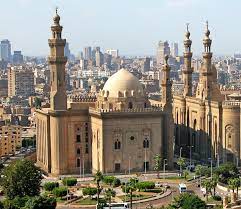Mamluk architecture was the architectural style under the Mamluk Sultanate (1250–1517), which ruled over Egypt, the Levant, and the Hijaz from their capital, Cairo. Despite their often tumultuous internal politics, the Mamluk sultans were prolific patrons of architecture and contributed enormously to the fabric of historic Cairo.[1] The Mamluk period, particularly in the 14th century, oversaw the peak of Cairo's power and prosperity.[2] Their architecture also appears in cities such as Damascus, Jerusalem, Aleppo, Tripoli, and Medina.
While the Mamluk empire was conquered by the Ottomans in 1517, Mamluk-style architecture continued as a local tradition in Cairo which was blended with new Ottoman architectural elements.In the late 19th century, "Neo-Mamluk" or Mamluk Revival buildings began to be built to represent a form of national architecture in Egypt.



Comments
Post a Comment